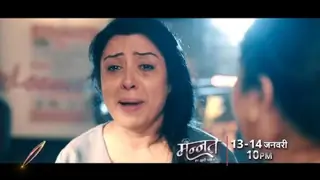It appears that there are discrepancies and omissions within the Bhandarkar Oriental Research Institute (BORI) version of the Mahabharata, particularly in its treatment of specific verses, incidents, and references concerning Lord Krishna. These omissions involve critical moments, such as Draupadi's prayers to Lord Krishna during her disrobing in the Sabha Parva and the dialogue between Bhishma and Shishupal regarding Lord Krishna's divine nature during the Rajasuya Yagya.
Additionally, the exclusion of the chapter detailing the birth of Lord Krishna, the sole mention of it in the entire Mahabharata, seems noteworthy and concerning in the BORI Critical Edition.
The names used to refer to Krishna throughout the Mahabharata, such as Vaasudev, Narayan, Janardana, Keshava, Madhava, Madhusudana, Hrishikesh, and Achyuta, signify various aspects and attributes associated with Lord Krishna, showcasing the depth and diversity of his character throughout the epic. The removal of key verses and chapters that highlight these aspects can lead to confusion and inconsistencies within the text.
The various names attributed to Lord Krishna carry profound meanings:
*Note I am not sure about the meanings of all the names, corrections are always welcome.
1.
Vasudev: The Lord of all 8 Vasus.
2.
Narayan: The Lord whose dwelling place (Ayan) is Water (Nara) or the One who supports all living beings (Nara/Jivas).
3.
Janardana: The Lord who troubles bad or wicked individuals.
4.
Madhava: The Husband (Dhava) of Mother Lakshmi (Maa).
5.
Hrishikesh: The Controller (Esh) of the Senses (Hrishika).
6.
Achyut: The Lord who has never fallen from his position (undefeated).
7.
Madhusudan: The Killer of the Demon Madhu.
8.
Keshava: The Killer of the Demon Keshi.
The Bhandarkar Oriental Research Institute (BORI) Critical Edition (CE) of the Mahabharata does not include verses explaining how Lord Krishna received specific names like Keshava or Madhusudan. Despite removing certain verses that might provide these explanations, the BORI CE retains numerous instances where Lord Krishna is addressed by these names.
It's crucial to consider the Puranas, supplementary texts authored by Ved Vyasa, to find answers if the BORI CE lacks certain verses. The various names used for Lord Krishna in the Mahabharata, like Keshava, Madhusudan, and others, affirm his identity as Vishnu himself.
The Mahabharata includes references where Krishna's divine form as Lord Vishnu (Narayan) with four arms is displayed, notably in the incident of the Universal Form shown to Arjuna, and when the hunter Jara mistakenly shot an arrow at Krishna's foot and witnessed his multi-armed form.
Prominent Vedic scholars, including Adi Shankaracharya, Ramanujacharya, Madhvacharya, and Saint Gyaneshwar, have accepted the supremacy of Lord Krishna, as depicted in the Mahabharata.
If one supports the removal of verses regarding Lord Krishna's extraordinary deeds, as per the BORI CE, it's essential to consider whether the workers at BORI possess more Vedic knowledge than revered ancient scholars like Adi Shankaracharya, Sri Ramanuja, Madhvacharya, and Saint Gyaneshwar.
Both the Ramayana and Mahabharata, classified as Itihasas, detail the Leelas (divine plays) of Lord Vishnu. They follow a similar theme where demons take birth in royal human families, causing distress. The Devas seek Narayan's assistance through prayers, and Narayan promises to incarnate to restore Dharma. Removing Raam from the Ramayana or Krishna from the Mahabharata would render these epics incomplete, as both narratives unfold Vishnu's Leela from birth to departure.
However, it's noted that the BORI CE does not include Krishna's birth incident, while the Valmiki Ramayana details the birth and departure of Lord Rama. This absence in the BORI CE might be seen as an incomplete portrayal of Krishna's narrative.
Continued in the next post.
Edited by IWasHareeshFan - 2 years ago




















